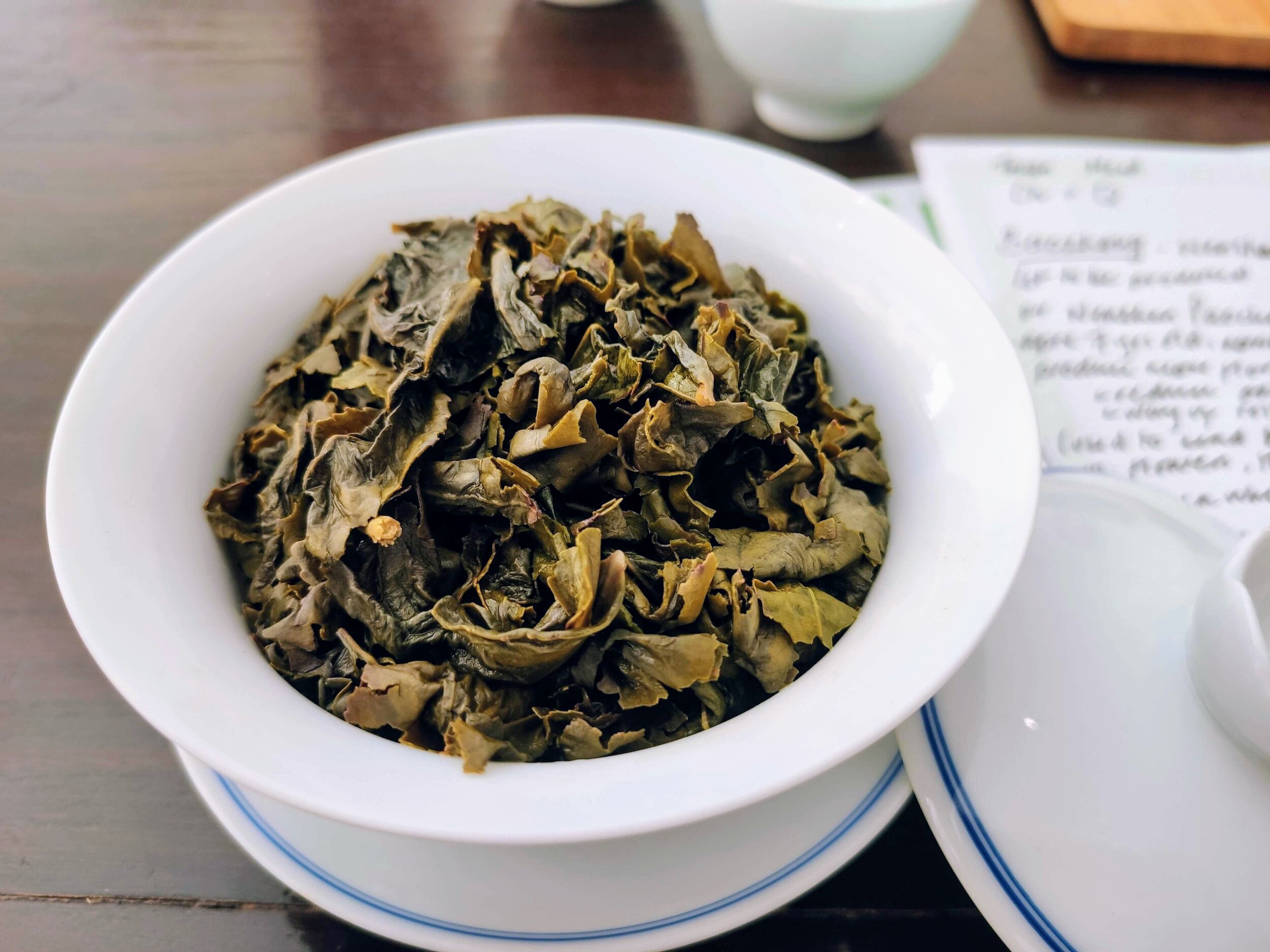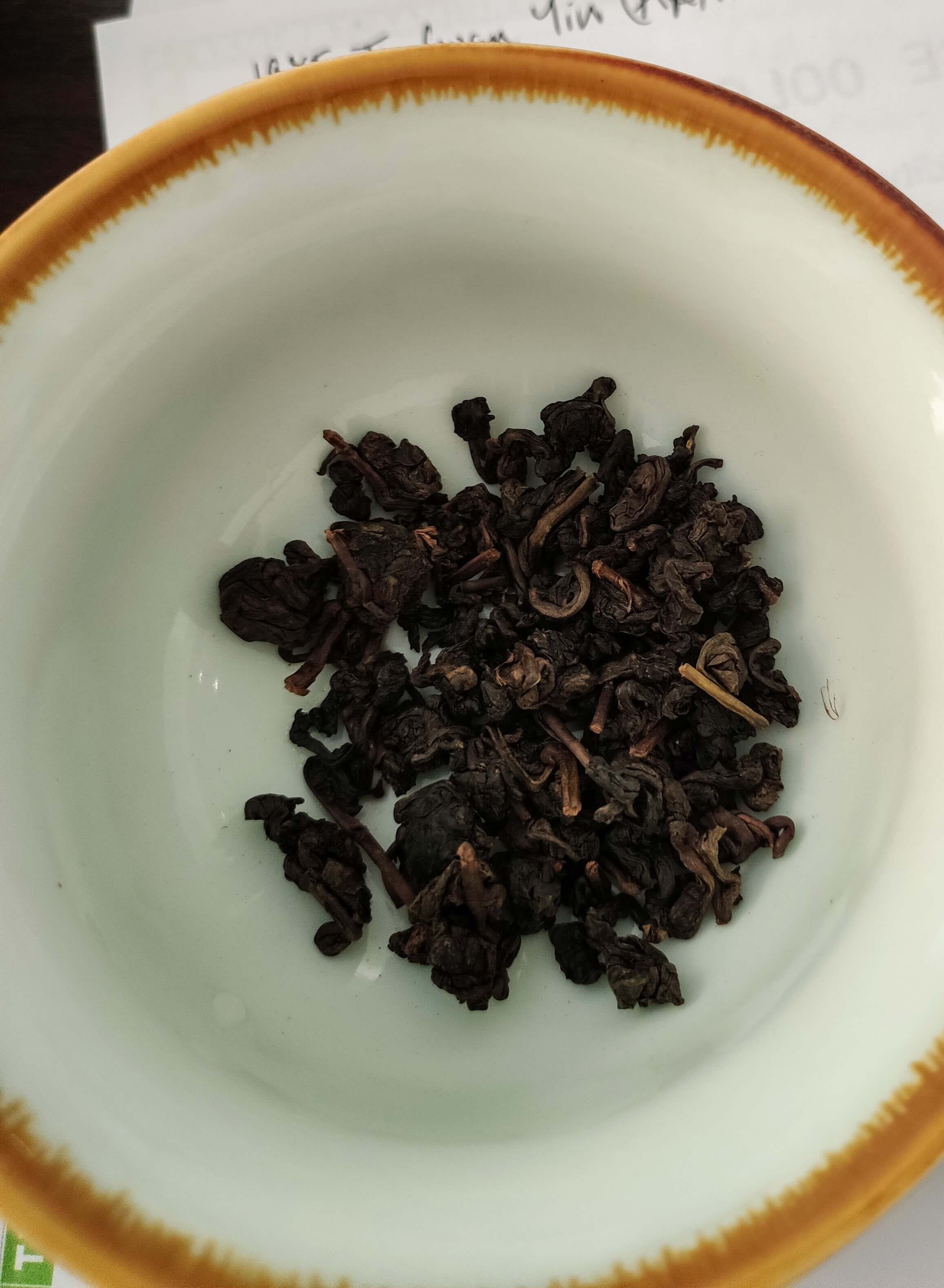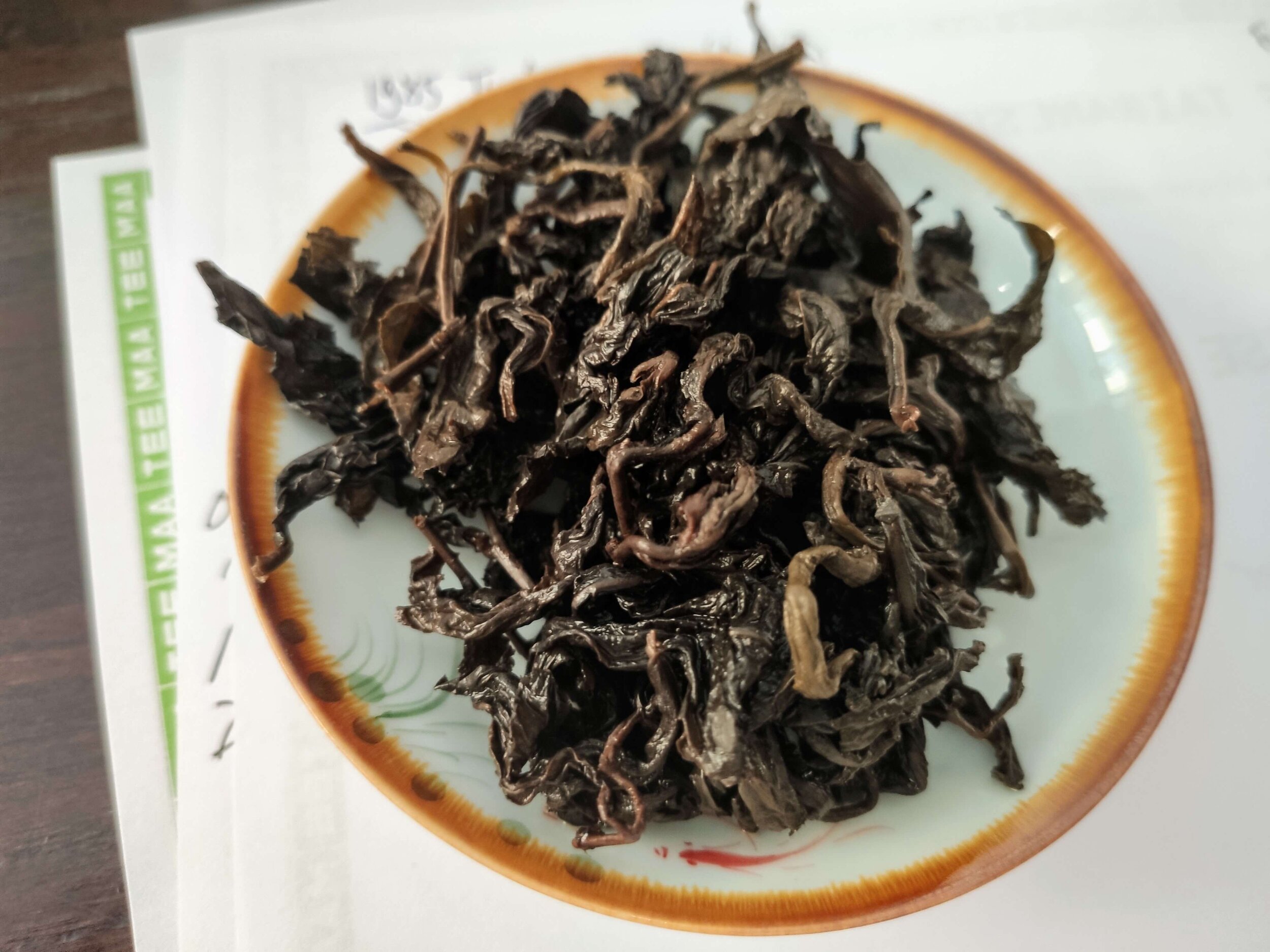...plus 2 Oolong Teas from Anxi, Fujian!
Taiwan is internationally renowned for excellent Oolong teas, having both inherited the Oolong tradition and developed many innovations. There are so many different types of Oolongs in Taiwan, it’s no wonder that this week’s workshop at TeeMaa overran by almost an hour! Too many delicious teas to taste and history to discover.
This blog is part two of a series of three covering ‘A Deep Dive into Oolongs’ workshop series by TeeMaa. Each week focuses on a different Oolong producing region including its history, processing, cultivars, brewing and tea tasting:
Workshop #1: Phoenix Dan Cong Oolong from Guangdong, China (2.8.20)
Workshop #2: Oolong Teas from Taiwan (9.8.20)
Workshop #3: Cliff Oolong from Wuyi, Fujian, China (16.8.20)
Origin of Taiwanese Oolongs
The origins of Taiwanese Oolongs date back some 200-300 years when settlers from Fujian and Guangdong provinces of China migrated to Northern Taiwan, near Taipei. There were conflicts between the two groups of settlers, and eventually Fujian gained jurisdiction of the prefecture.
Not only people, but tea plants and tea production know-how were brought over to Taiwan. Wu Yi Cliff Oolongs from North Fujian with their twisted style of leaf, and Tie Guan Yin from South Fujian with their rolled tea ball style.
Over the years tea production expanded southward, shifting from lower elevations to the high altitude mountainous regions running down the middle of the island and the south east.
Taiwan Terroir
Taiwan is an island close to the Tropic of Cancer and has mountainous terrain. Its subtropical climate and high elevations are ideal growing conditions for Oolong tea. Tea can be grown anywhere in this subtropical environment, having plentiful sunshine, abundant rainfall and a temperate winter. However, the higher elevations above 1000m, classified as ‘High Mountain Oolongs’, create very special growing conditions. The cycles of sunshine and foggy mists, variation in temperature between night and day, allow a slower growth and produce more aromatic and sweeter teas.
Taiwanese Oolong Cultivars
What is a cultivar? Well, we can talk about Varieties and Cultivars. With tea, there are only two varieties - Camellia Sinensis Assamica and Camellia Sinensis Sinensis. Cultivars are varieties that have been propagated to maintain certain aspects, such as taste, aroma, resilience, etc, through methods such as branching.
The Japanese occupation of Taiwan (1895-1945) had a huge impact on Taiwanese tea. Around 1900, Japan set up a tea research institute, called TRES (Taiwan Tea Research and Extension Station), to educate tea farmers and develop cultivars that are especially suited to Taiwan’s climate and soil.
Ching Shin is one of the highest quality and widest used cultivars, and one of the original cultivars chosen by Japan to grow in Taiwan. After the Japanese left, TRES remained active and has continued to create many cultivars, including Jin Xuan and Cui Yu in the 1980s.
Tea Tasting
Onto to the tea tasting! Xin Yuan decided to take us on an historical tea tasting journey, starting from the earliest Oolongs to be produced to the more recent developments in Taiwanese Oolongs.
Baozhong (or Pouchong)
Most Chinese and Taiwanese teas tend to have romantic poetic names, but not so for Baozhong! It means ‘Wrapped Package’ as the tea was wrapped up for sale with the maker’s seal. Baozhong is from Wenshan, Taipei County in the North of Taiwan and was one of the first Oolongs to be produced in Taiwan.
The tea farmers used to send the processed tea to mainland China to have it scented with flowers for the export market. During the Japanese occupation, processing methods were further developed, reducing the oxidation level. This resulted in a naturally occurring floral flavour so the tea no longer required additional scenting on the mainland. At just 5-15% oxidation, Baozhong is the lightest oxidised Oolong and closest to a Green tea.
The Baozhong Oolong that we tasted is 7 years old. The dry leaves are long dark twists. It actually looks like a heavily oxidised tea, as its once green colour has turned darker with age. It was a surprise that the brewed tea still produced such a pale liquor. And it still gave a lovely floral aroma. The flavour was nicely balanced between floral Oolong and the fresh grassiness of a Green tea, due to the low oxidation. The age gave a mild mellowed out feeling.
Oriental Beauty
An Oolong with many names! Oriental Beauty is also known as Dongfang Meiren (Eastern Beauty), Bai Hao Oolong (White Haired Oolong), Pengfeng Cha (Braggart’s tea). The latter is down to the farmer’s neighbours, who couldn’t believe how he could sell this tea at such a high or exaggerated price.
Oriental Beauty is from Hinshu County in the north of Taiwan. The opposite to Baozhong, it is heavily oxidised up to 75% and is the closest Oolong to Black/Red tea. It was developed during the Japanese occupation but wasn’t commercially successful until it won accolades in the 1933 local tea competition. Tea competitions were set up by the government to encourage farmers to produce high quality teas for export. 1933 catapulted Oriental Beauty to stardom and its accompanying high prices.
Oriental Beauty is a white tipped Oolong, where the bud and 2 leaves are plucked, as opposed to a typical Oolong pluck of 2-3 mature leaves. For this reason it’s best to brew Oriental Beauty at a lower temperature of 85C to bring out more of the sweetness. The white tips can be seen in the dry leaf which is in the twisted Wuyi Cliff style. The distinct honey-like sweetness is caused by what is known as bug bitten tea. The saliva from the bites of the leafhopper bug reacts with the tea leaf causing the release of a unique enzyme which produces a natural sweetness. I also detected a spicy note, liquorice-like, once the liquor had cooled down.
Tie Guan Yin (from Anxi, Fujian)
As a comparison with Taiwanese Tie Guan Yin we tasted its ancestor, Tie Guan Yin from Anxi, Southern Fujian. Tie Guan Yin translates as Iron Goddess of Mercy. This is a firm favourite of mine. I tasted lots of different Green teas when I lived in China but never could call one my favourite. Then I tasted Tie Guan Yin, a ‘green’ Oolong, and fell in love with its soft buttery character. So much so, that I went on a little pilgrimage to Anxi to find out more about it! You can read in these 2 blog posts: Weekend Trip to Anxi, Fujian - Days 1 & 2 and Weekend Trip to Anxi, Fujian - Day 3
Tie Guan Yin is rolled into small tight green balls which unfurl when brewed. It has a lovely fresh vegetal aroma with floral notes, and a sweet honey taste. Interestingly, Tie Guan Yin started out life as a ‘dark’ Oolong before production methods changed to make it a ‘green’ Oolong, using a lighter oxidisation. This was perhaps influenced by the Taiwanese trend in the 1970s which, due to market demand, saw its Oolongs shifting from dark to green.
Tie Guan Yin (from Taiwan)
The biggest difference between Tie Guan Yin from Anxi and Tie Guan Yin from Taiwan is the roasting. Whereas the Anxi modern style is closer to a Green tea with a light oxidation, Taiwanese Tie Guan Yin is roasted and in the ‘dark’ style. It’s usually known as Muzha Tie Guan Yin, after the area in which it’s grown near Taipei.
Firstly the dry leaves are noticeably different in colour, small brown tea balls as opposed to the Anxi green. It has a sweet roasted aroma and a stronger taste. It has a roasted nutty character with a mild smoky finish and a drying mouthfeel. I’m going to save this Oolong for when the nights start drawing in!
Dong Ding Oolong
Dong Ding Oolong or Frozen Summit is produced in Nantou County. It’s grown at an elevation below 1,000m so isn’t classed as a ‘High Mountain Oolong’. You may think that the name is somewhat misleading, but actually Dong Ding Oolong was one of the first Oolongs in Taiwan to be grown at elevation about 150 years ago. So, at the time it was the highest grown, and the name referred to the challenge faced in picking the tea.
Starting out as a dark Oolong, Dong Ding followed the market trend to a lighter oxidation of 20-30% but is heavily roasted which gives it a slightly nutty flavour. It’s finished in the South Fujian style of rolled tea balls. I was expecting a baked toasty aroma due to the roasting, but instead was surprised with an amazing fresh vegetal, floral and sweet smell. The liquor is a very pale green. It has a sweet, honey taste with nutty notes, and a buttery mouthfeel with lingering sweet aftertaste. I remember being really impressed by this Oolong before, so I’m very glad to get reacquainted!
Yushan High Mountain
Now we’re coming into Taiwanese Oolong’s more recent history. The 1970s brought us Yushan High Mountain or Jade Mountain, also hailing from Nantou County. Yushan is Taiwan’s tallest mountain at almost 4,000m. Yushan High Mountain Oolong is grown at an elevation of 1,400m.
Two climatic factors particularly affect this Oolong. At this high elevation the tea plants benefit from a bigger temperature change between night and day, increasing the sweetness of the finished tea. Also, the mountain is often cloaked in misty fog and cloud cover, receiving less sunshine, which slows down growth and increases pectin in the leaf intensifying the tea’s aroma.
And it does have the most amazing smell of fresh alpine meadows! The dry leaf is in the rolled tea ball style, and more yellow-green in colour than Dong Ding. The liquor is a bright pale yellow. It has a beautiful sweet well rounded vegetal taste with a thick creamy mouthfeel. Both refreshing and rich at the same time. It’s a new favourite.
Gaba Oolong
Gaba Oolong brings us into 1980s Taiwan. GABA stands for gamma-amino butyric acid and is the main inhibitory neurotransmitter preventing the central nervous system from becoming too excited. Gaba Oolong was developed in the 1980s and is made by exposing the tea leaves to a nitrogen rich environment during the oxidisation process. This results in GABA-rich tea. To be classed as Gaba tea, the leaves must contain at least 150mg of GABA per 100g (regular Oolong having about 6mg). Gaba Oolong is therefore an excellent stress and anxiety reliever as the GABA content calms the nervous system.
The Gaba Oolong that we tried has a sweet fruity smell and gives a golden amber liquor. It has a nice soft tangy fruity taste, with a slight oily mouthfeel. Xin Yuan brewed this at 100C for a few minutes in the gaiwan. Apparently Gaba Oolong can be brewed for up to 30 mins without any bitterness!
1985 Tie Guan Yin (from Anxi, Fujian)
So I have to say that by this point, I was suffering from tea tasting fatigue! Call me a lightweight, but 5-6 teas is ideal for a tasting. However our 8th and final tea couldn’t be missed - a 35 year old aged Tie Guan Yin.
This was aged from a dark Tie Guan Yin. These darker roasted Oolongs are better candidates for aging than green Oolongs due to a lower water content. It was interesting to compare with the 2 earlier Tie Guan Yins. It had a much more mellow character than the fresh Tie Guan Yin. Very aromatic and the sweetness was still there, but with more caramelised notes, and drying mouthfeel.
Even though I’m familiar with quite a few Taiwanese Oolongs, it was intriguing to put them in an historical and geographic context. There is such a wide variety of Oolongs in Taiwan with a fascinating history full of political intrigue, experimentation and innovations. I feel that I’ve only just scratched the surface.
Wet leaves. On the tray: top left - Oriental Beauty, top right - Dong Ding; middle row left to right - Tie Guan Yin (Anxi), YuShan High Mountain, Tie Guan Yin (Taiwan); bottom - Baozhong. Not on the tray: top - 1985 Tie Guan Yin, bottom - Gaba Oolong
If you’re based in Helsinki, Part 3 of TeeMaa’s Oolong Deep Dive series is coming up on 16th August. If not, then stay tuned for my next blog post on Workshop #3: Cliff Oolong from Fujian. And you can read about Workshop #1: Phoenix Dancong Oolong from Guangdong in my blog post.






















